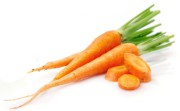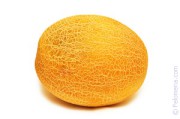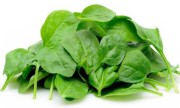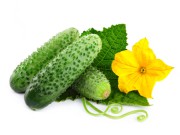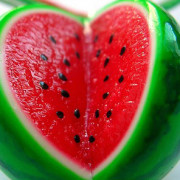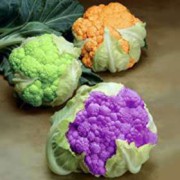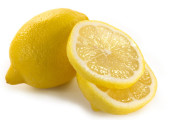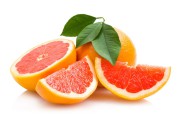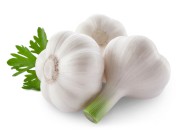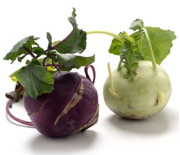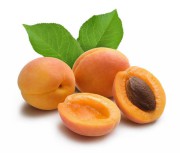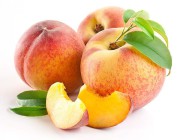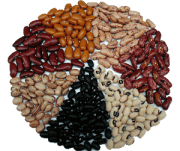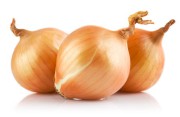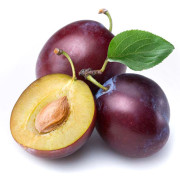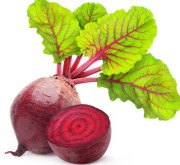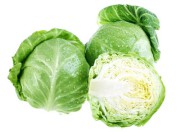Miscellaneous
The benefits of carrots and harm to the human body: properties, calorie content and what vitamins are in carrots.
Carrots are a very popular biennial plant among many gardeners. Carrots are unpretentious and do not require much care and therefore grow in almost any climate zone, except the far north.
Melon plant: properties, description, calorie content, what are the benefits of melon and harm to health. Is it a berry, fruit or vegetable?
Melon is a melon crop and belongs to the family of pumpkin plants and the cucumber genus. The melon fruit is a false berry, having both a spherical and an oblong elongated shape, yellow, brown and even white. A ripe melon can weigh about 200 g, and can reach 20 kg.
Spinach plant - beneficial properties and contraindications. What are the benefits of spinach for the body and how to prepare and store it for the winter.
Spinach is such an interesting plant that you either really love to eat, or quite the opposite, you don’t accept it in any form - there is no middle ground here! Despite its ambiguity in taste preferences among people, it is a very healthy product that can and should be consumed in any form.
Fresh cucumbers - benefits and harm to the body: properties, vitamins and calorie content of cucumbers.
The common cucumber is the name given to an annual herbaceous plant of the Cucurbitaceae family. This amazing fruit was known more than 6 thousand years ago. Their homeland is considered to be the tropical and subtropical regions of India and China.
Watermelon plant: description, properties, health benefits and harm. What type of watermelon is it, a berry or a fruit?
Watermelon belongs to the pumpkin family. This is a melon crop. The fruit of a watermelon is called a berry, although it is a juicy pumpkin. The birthplace of watermelons is Africa. They were brought to Russia by the Tatars. This crop began to be grown in the lower Volga, and then in other areas (Krasnodar Territory, Volga region). Now breeders have also developed varieties for the Moscow region.
Cauliflower - beneficial properties, benefits and harm to the body. Why cauliflower, what it looks like and how it is useful.
Cauliflower is a vegetable plant belonging to the cabbage family, type – cabbage. Historians consider the Mediterranean to be the homeland of cauliflower; the first official mention of the species refers to the state of Syria. It was from there that cabbage came to Europe, and a little later spread throughout the world.
The benefits and harms of lemons. Properties, composition and benefits of lemon for the body and weight loss.
Lemon is a popular citrus fruit. Southeast Asia is considered to be the birthplace of lemon. Today, lemon is cultivated in countries with tropical and subtropical climates.
Grapefruit - harm and beneficial properties. What are the benefits of grapefruit for the body of men and women?
The bittersweet, sour and shockingly refreshing taste of grapefruit is a little perplexing when you first try it. And then you can simply “fall in love” with it, like chocolate. But, in addition to its unusual taste and aroma, it is also a storehouse of vitamins, minerals, amino acids and other useful substances.
How garlic is useful for the human body - benefits and harms, vitamins, properties and composition of garlic.
Garlic is a perennial herbaceous plant 40-50 cm high, blooms in the summer with greenish-white flowers collected in spherical umbrellas along with tiny bulbs. The bulb is white or pink in color and is made up of 3-18 cloves.
The benefits of pears and harm to the body. Composition, characteristics, properties and calorie content. What is the value or what vitamins are in the pear.
Homer's legendary "Odyssey" mentions wondrous fruits ripening in the gardens of the Persian king. These fruits were pears, which today are difficult to surprise anyone with.
Useful properties of parsley and contraindications. What are the benefits of parsley for men and women and how to prepare parsley for the winter.
Greece can rightfully be considered the birthplace of parsley. The ancient Greeks mainly used it as a decorative prop during religious ceremonies. The winners of sports competitions were awarded wreaths woven from parsley. The same wreaths were given to loved ones.
Kohlrabi cabbage: properties, benefits and harms, vitamins, composition. What kohlrabi cabbage looks like - description and photo.
Kohlrabi is native to Northern Europe. Here, according to chroniclers, cabbage first appeared in 1554, and 100 years later it spread throughout Europe, including the Mediterranean. Translated from German as “cabbage turnip”.
The benefits of apricots and possible harm. What vitamins are in apricots? History, description and characteristics.
Apricot is a fruit tree belonging to the plum genus, rose family.The fruit of the tree is the apricot, a bright, orange-yellow seeded fruit with soft, juicy flesh and a sweet or sour taste.
Benefits of peaches and harm to health. History, description, calorie content and other beneficial properties of peach.
The history of people's acquaintance with wild peach began 4 thousand years ago in distant China. By growing and caring for these wonderful trees, the Chinese cultivated the peach, and in this form it became widespread in India, Iran and many Asian countries. Thanks to Alexander the Great, peach culture reached southern European countries, and later reached central Europe. But peach trees grow best in countries with a tropical climate, which are the largest exporters in the world - China, India, Italy, Greece.
Beans: benefits and harms for the body. Properties, contraindications, chemical composition, description and use of beans in cooking.
Beans can rightfully be called the most ancient product, dating back seven thousand years of its unique history. In ancient times, beans were a favorite food item among the ancient Egyptians and Ancient China. In European countries, they learned about beans after the discovery of the American continent.
Onions: benefits and harm for humans, calorie content, what vitamins are in onions.
Onion is a biennial or perennial plant belonging to the onion subfamily. The first mention of onions dates back to the 20th century BC; healers for many centuries have used this plant as a panacea for all possible diseases.With the development of science, scientists were able to substantiate this fact quite scientifically: thanks to the phytoncides contained in onions in huge quantities, many “bad” bacteria actually die from exposure to onions.
Plum - beneficial properties and contraindications: description, vitamins and calorie content of plum.
Plum is a fruit tree belonging to the rose family, subfamily of plum or almond. The fruit of the tree is a plum, which can be small, medium or very large; the color of the ripe fruit is blue, dark purple or almost black (this depends on the type of tree).
Sweet bell pepper - benefits and harm. What are the properties, vitamins and calorie content of pepper.
Sweet bell pepper is an annual plant belonging to the nightshade family. Peppers are called sweet peppers due to their specific, sweetish taste and juicy flesh, which can be green, red, yellow, orange or brown. The color depends on the plant variety and the degree of ripening of the particular fruit.
Red beets - harm and benefits of beets for the body: properties, calorie content, vitamins.
Humanity has used beets for food since ancient times. People have long noticed that in addition to nutritional value, beets have a variety of beneficial and medicinal properties. And this is no coincidence. After all, the beet root contains vitamins, minerals and biologically active substances. Since ancient times, beets have been used to improve digestive processes and metabolism, and also as a general tonic.
White cabbage: benefits and harm to the body, description, composition and characteristics.What vitamins and calories are in white cabbage.
White cabbage is a garden crop widespread in all countries of the world. It can be grown almost anywhere. 100 g of cabbage contains only 27 kcal. It has many vitamins and minerals.

